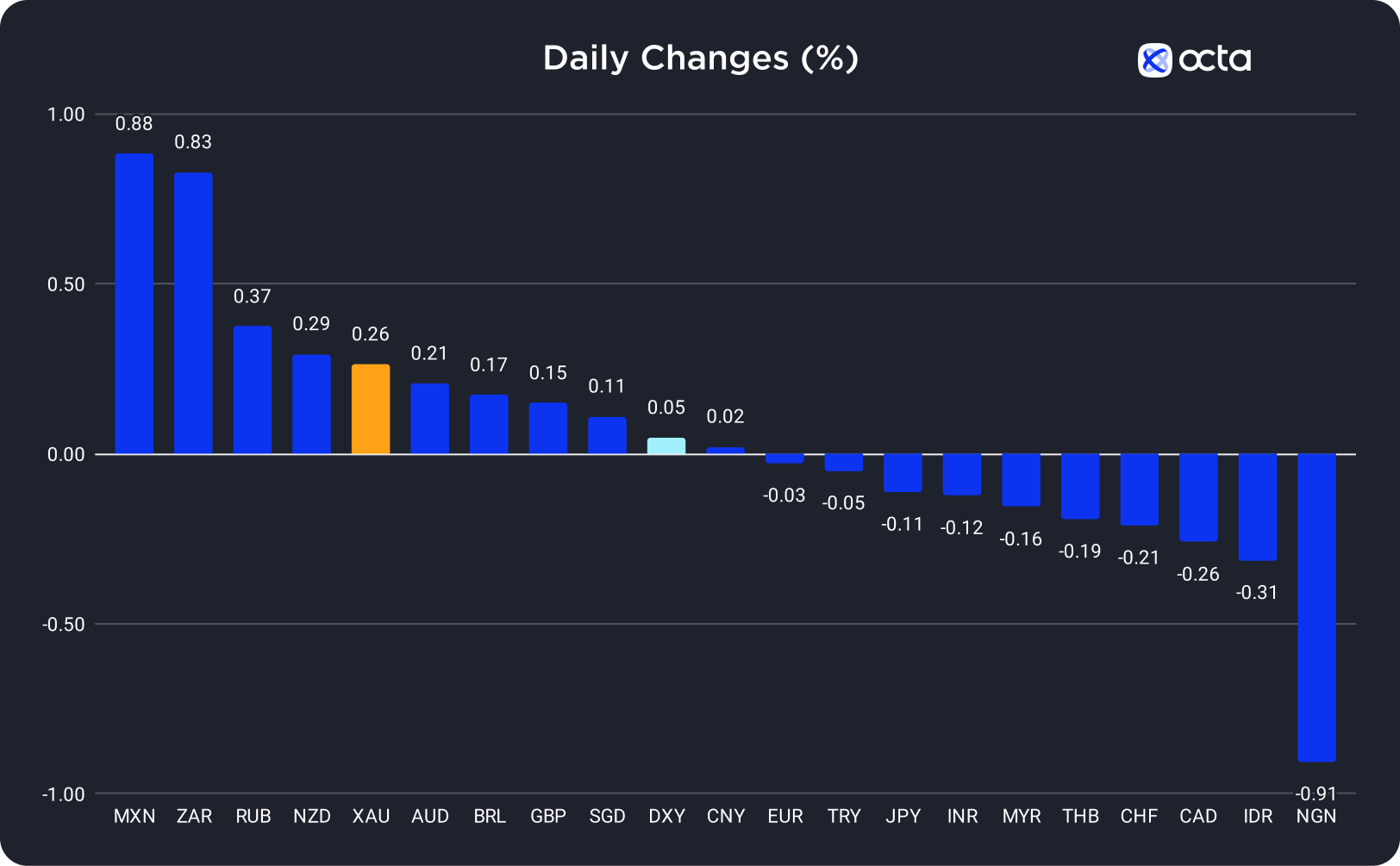On Thursday, the Mexican peso (MXN) was the best-performing currency among the 20 global currencies we track, while the Nigerian naira (NGN) showed the weakest results. The New Zealand dollar (NZD) was the leader among the majors, while the Canadian dollar (CAD) underperformed.
Demand for Gold Grows as the Middle East Conflict Continues
Gold (XAU) rose by 0.26% on Thursday as safe-haven demand fuelled by the Middle East conflict, offsetting the bearish pressure caused by the better-than-expected U.S. Gross Domestic Product (GDP) report.
Overnight, Israeli forces launched their most extensive operation in Gaza, even though diplomatic initiatives tried to prevent a full-scale ground invasion. Still, gold's upward trajectory was limited by the strong U.S. GDP numbers, demonstrating the resilience of the U.S. economy and bolstering the expectation that interest rates will remain elevated longer. The U.S. economy experienced its most rapid growth in nearly two years in Q3, contradicting predictions of a potential recession. As a result, the market has shifted its expectations of U.S. interest rate cuts to June or July 2024.
XAU/USD was rising during the Asian and early European trading sessions. Today, traders should focus on the release of the U.S. Personal Consumption Expenditures (PCE) Price Index at 12:30 p.m. UTC. Lower-than-expected figures should positively impact XAU/USD, potentially pushing the price above 1,990. However, the bullish trend in the pair may pause or reverse if the figures are better than expected.
"Spot gold may retrace into a range of 1,951–1,964 USD per ounce, following its second failure to break a resistance of 1,998," said Reuters analyst Wang Tao.
The ECB Paused its Rate Hiking Cycle
Yesterday, the euro (EUR) fell to 1.05300 but recovered after the European Central Bank's (ECB) interest rate decision.
As expected, the ECB paused its rate-hiking campaign and left the base interest rate at 4% yesterday. The regulator didn't outline any shifts in the monetary policy. Moreover, the ECB signaled that the September rate hike was probably the last one.
"Overall, I think it was pretty dovish. The ECB is starting to be less worried about inflation and more concerned about growth," said Algebris Investments fund manager Gabriele Foa.
Indeed, according to Reuters, the market believes there is less than a 10% chance that rate hikes will continue. However, macroeconomic risks persist as inflation may remain sticky due to higher energy prices and wage growth. Therefore, it's too early to think that rate cuts are coming soon.
During the Asian trading window, EUR/USD rose but then declined in the early hours of the European trading session. Today, the traders will focus on the U.S. Personal Consumption Expenditures (PCE) Price Index report at 12:30 p.m. UTC. If the numbers fall short of expectations, EUR/USD may rise above 1.05700. However, if the data surpasses expectations, the pair may continue to move downward.
